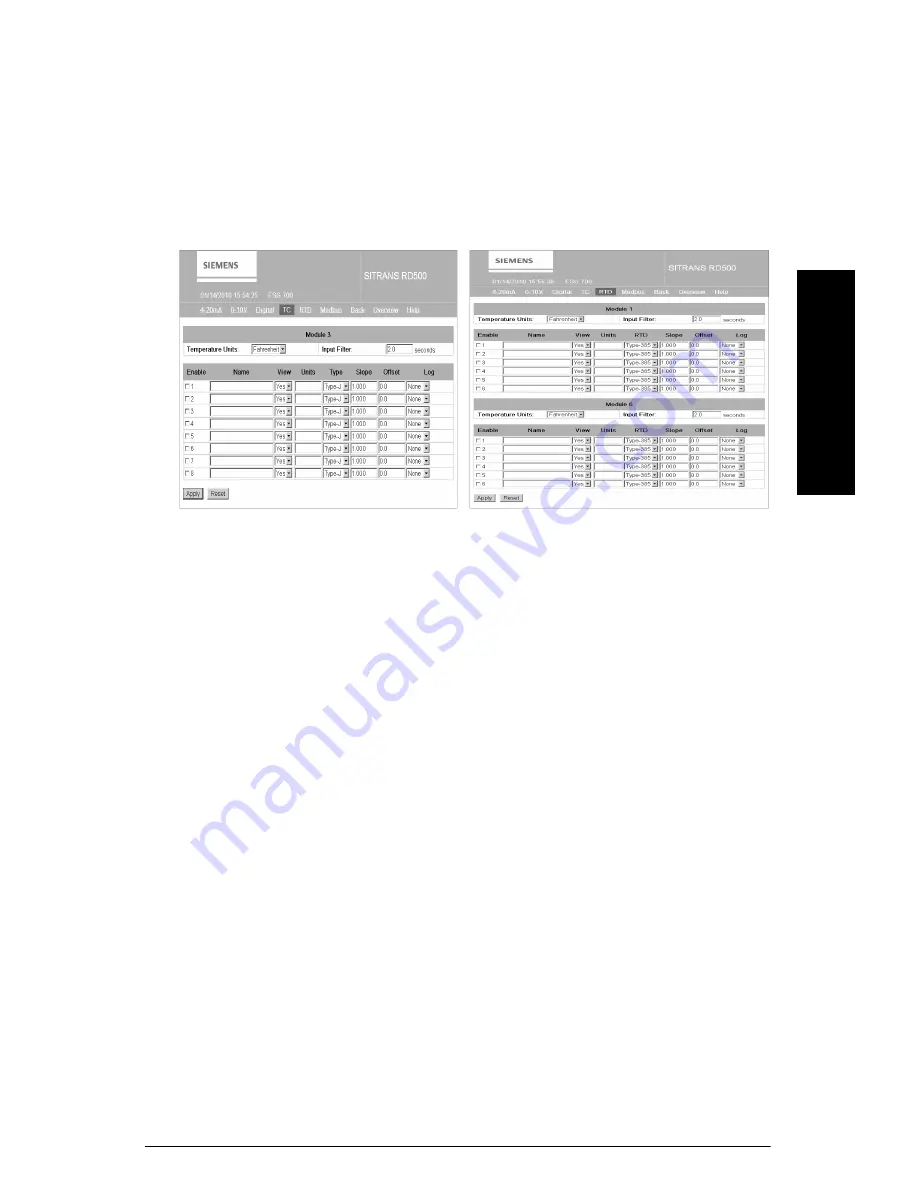
7ML19985MA01
SITRANS RD500 – OPERATING INSTRUCTIONS
Page 25
mm
mmm
I/O Configur
at
ion
•
When using Pulse counter, IN represents digital inputs, OP represents relay or soild-
state output depending on your module, and CNT represents pulse counter.
•
When using pulse counter, you can select your pulse count multiplier using Scaling,
and can turn the visibility of the input in the overview screen using View.
Temperature Input Modules (TC/RTD)
Below, see how to create and define I/O channels for the thermocouple and RTD
modules.
•
The Temperature Units property is used to select between the Kelvin, Fahrenheit or
Celsius temperature scales. This property is specific to the module, rather than to a
given input.
•
The Input Filter is a time constant used to stabilize fluctuating input signals. This
property is specific to the module, rather than to a given input.
•
The Enable field is used to enable or disable each channel independently. Channels
must be enabled in order for them to function.
•
The Name property allows a descriptive name to be applied to the I/O channel, e.g.
Pump 1 Bearing Temperature. Avoid using duplicate names.
•
The Units are user defined in this text field. Units can be entered based on customer
application specific requirements.
•
The Type (Thermocouple or RTD) property is used to select the appropriate sensor
type. Each input can be programmed independently.
•
The Slope property can be used to change the ratio of the PV in relationship to the
sensor reading. This is useful in applications in which the sensor error is non-linear.
See the application example below.
•
The Offset property can be used to compensate, or shift, the PV value. This setting
allows customization of each input based on a given sensor's error. It also allows
correction of the PV value in applications in which the sensor isn't measuring the
process directly, thereby inducing an error. See the application example below.
•
The Log property is used to select the log file into which the channel's data is
recorded.
•
The View property is used to set the display of the channel’s information in the
overview screen.
















































